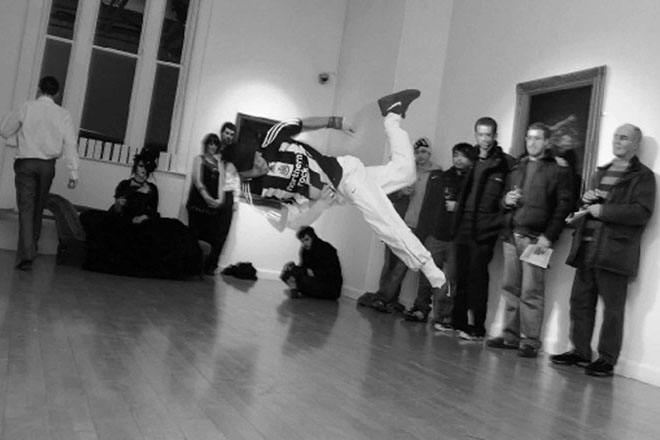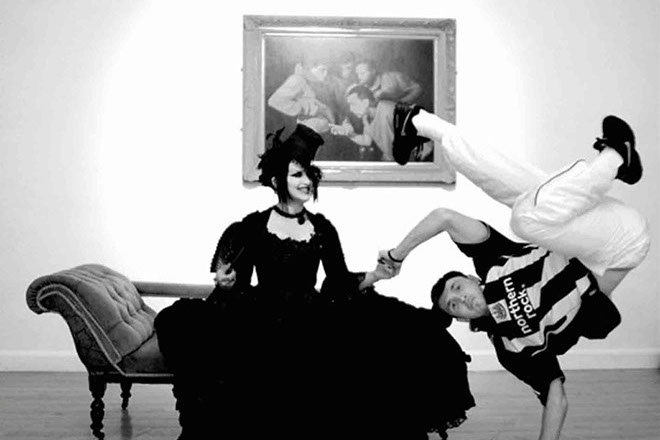The worlds of Fine Art and street-dance collide as Elizabeth Tooth captures moments of impossible stillness and grace in the seemingly aggressive yet highly controlled movements of B-Boying. Referencing Old Master paintings and sculptures but featuring unequivocally modern subjects, the artist captures the unexpectedly elegant freezes, power-moves and acrobatic precision of Breakdance with her trademark use of chiaroscuro and stark contrasts of old and new. Later paintings in the series also explore the fetishisation of mobile devices which paradoxically isolate the inhabitant of the urban jungle rather than facilitate meaningful communication.
Several of the paintings in the series came from just watching the dancers move; setting up the lighting and just letting them freestyle to the point of exhaustion - then continuing on past breaking point - while gathering hundreds of photographs.
"What really grabbed me later was how much these images looked like scenes from a crucifixion rather than a dance... what a real crucifixion might be like, more so perhaps than any of the other crucifixion-inspired pieces I've done. Less stylised and more horribly real, although only parts of the body are seen. It's the suffering of the flesh, for me."

Breakdance crash-landed in Elizabeth’s consciousness during her Concilium Plebis project, painting dance team Trinity Warriors in the style of Caravaggio’s Doubting Thomas. Then, in 2009 rival team Bad Taste Cru performed a show based on her paintings in Newcastle and blew her away; "The dancers seem to escape the limitations of their bodies and transcend what I imagined human beings are capable of." Inspired by the notion that the dancers need nothing but their bodies to express themselves, the body sometimes appears suspended in empty space - the ultimate moment of freedom.
For the first time the artist approaches dynamic human anatomy; seemingly peering beneath the skin to examine what underlying mechanisms support these otherworldly postures. At times harsh fields of light and shade dissect the body, almost to abstraction. Notions of masculinity and animalistic display pervade the canvas as Elizabeth Tooth demonstrates that Art can bring together people and ideas that could meet in no other way.















